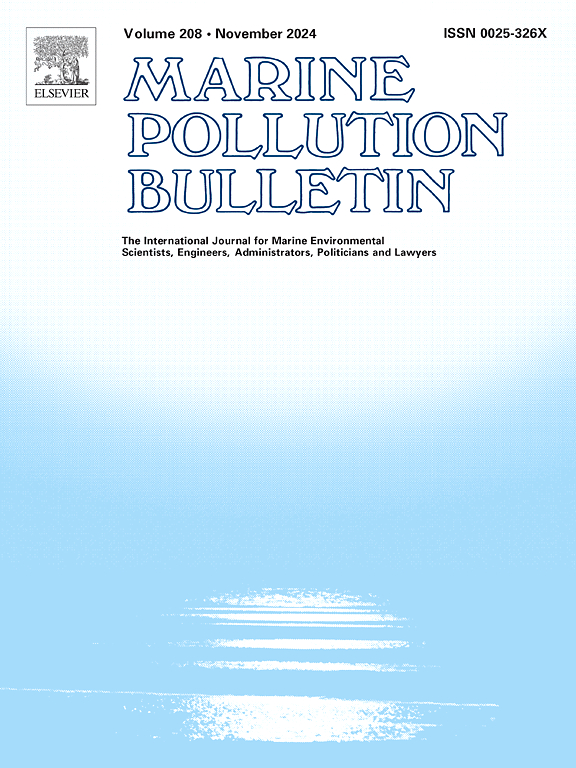评估休闲海滩上的烟头污染:两种取样方法及其对金属释放影响的比较研究。
IF 4.9
3区 环境科学与生态学
Q1 ENVIRONMENTAL SCIENCES
引用次数: 0
摘要
废弃烟头是环境污染的重要来源。在有大量卷烟废物的地区,由于滤嘴和吸烟烟草的化学物质的浸出,可能会产生环境危害。准确估计海滩上的细菌数量需要一种标准化的方法。此外,估计这些污染物中金属的释放可以为了解海滩污染提供重要的见解。本研究比较了两种采样方法来估计休闲海滩上的CB废物,并评估潜在的金属释放。在这项结合实验和meta分析的研究中,将直径为5、10和15米的圆形方法与洪水蓄积区(FAZ)方法(1米乘10米,平行于水线)进行了比较。采用系统研究方法和荟萃分析方法对里海沿岸的金属释放量进行了估算。Kruskal-Wallis检验显示,至少有一种抽样方法的平均值存在显著差异(P本文章由计算机程序翻译,如有差异,请以英文原文为准。
Assessing cigarette butt pollution on recreational beaches: A comparative study of two sampling methods and their impact on metal release
Discarded cigarette butts (CBs) are a significant source of environmental pollution. In areas with large amounts of cigarette waste, environmental hazards may arise due to the leaching of chemicals from filters and smoked tobacco. Accurately estimating the number of CBs on beaches requires a standardized method. Additionally, estimating the release of metals from these pollutants can provide important insights into beach pollution. This study compares two sampling methods to estimate CB waste on recreational beaches and evaluate the potential release of metals. In this combined experimental and meta-analysis study, circular methods with diameters of 5, 10, and 15 m were compared to a Flood Accumulation Zone (FAZ) method (1 m by 10 m, parallel to the waterline). Systematic study methods and meta-analysis were applied to estimate the release of metals along the Caspian Sea beaches. The Kruskal-Wallis test revealed significant differences in the averages of at least one sampling method (P < 0.006). Follow-up Mann-Whitney U tests showed no significant differences among the circular methods, but all circular methods significantly differed from the FAZ method (P < 0.05). The difference between the circular methods was smaller than the difference with the FAZ method. The minimum and maximum metal concentrations, in micrograms per square meter of Caspian Sea beaches, were associated with mercury and manganese. Circular methods with different diameters did not significantly differ and are effective in reducing CB accumulation due to coastal waves and wind. These methods can be considered standard for estimating CBs on beaches. Cigarette waste acts as a point source of metal pollution, with rapid leaching of metals increasing the risk of acute harm to coastal and marine organisms.
求助全文
通过发布文献求助,成功后即可免费获取论文全文。
去求助
来源期刊

Marine pollution bulletin
环境科学-海洋与淡水生物学
CiteScore
10.20
自引率
15.50%
发文量
1077
审稿时长
68 days
期刊介绍:
Marine Pollution Bulletin is concerned with the rational use of maritime and marine resources in estuaries, the seas and oceans, as well as with documenting marine pollution and introducing new forms of measurement and analysis. A wide range of topics are discussed as news, comment, reviews and research reports, not only on effluent disposal and pollution control, but also on the management, economic aspects and protection of the marine environment in general.
 求助内容:
求助内容: 应助结果提醒方式:
应助结果提醒方式:


